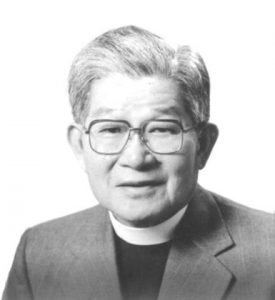Missiological Iron Sharpening
Former TCU professor Dr. Nelson Jennings announced by email the most recent issue of “Global Missiology – English” (Vol 19 No 3):
This issue’s theme is “Missiological Iron Sharpening.” The articles and book reviews offer challenges to think, study, serve, and equip others carefully about approaches to Christian missions—to sharpen each other, just as “iron sharpens iron” (Proverbs 27:17). Enjoy, use, and feel free to disseminate freely to others.
The entire issue is freely accessible online in 3 formats (DOCX, PDF, and HTML).
TCU faculty and student interests span the globe, so it would be foolish to make any assumptions about which articles they might consider to be more “interesting” or “relevant.” Click here to see the full table of contents to decide that for yourself.
But since I have the power of the keys here, I’ll take the liberty to draw your attention to a few in particular, with a single quote from each one as a sort of teaser (links will take you to html versions):
Missiological Iron Sharpening, by J. Nelson Jennings
See this for an overview of the entire issue, with a number of helpful reflections about thoughtful and respectful engagement while holding different viewpoints.
When “iron sharpens iron,” discomfort and even pain are inevitable. Constructive growth should occur as well. May this issue provide helpful stimulation, challenge, and encouragement to you the readers and those whom you serve.
Discussing and Catalyzing Movements: An Invitation to Research, Sacrifice, and Commitment, by Pam Arlund and Warrick Farah
As a global discussion and a significantly large phenomenon in the world today, church planting movements (CPM) or disciple making movements (DMM) have attracted much attention and enthusiasm in the missions community. . . . However, there is also a minority view of detractors . . . This article responds to some of those critics . . . The authors hope that this approach will foster a helpful, constructive, and ongoing dialogue on movements missiology for the missions community.
Advancing Conversations about Proclamational and Movements Methodologies, by Matt Rhodes
Thousands of missionaries are sent out every year. Their training will profoundly affect their lives and those of lost people around them. It is our responsibility as Christians and professionals to investigate how to train them most effectively, even if it takes a few essays.
Let’s spill some ink.
Vulnerable Mission in Africa: Why Some of Today’s Intercultural Missionaries Should Restrict Themselves to Local Languages and Resources, by Jim Harries
While Western missionaries in the majority world need to be guided by locals and to work “under” local churches, thinking they understand what they are told when they arrive and when people talk to them in English will easily make them into a burden rather than an asset to an indigenous church.
Early Korean Mission Strategy and Structure 1880-1940: Bridging the Gap Between Traditional Mission Methods and Church Movements, by Derek Seipp and Jeff Kwon
The early Korean Protestant church experienced growth and expansion to such a degree that one of its cities, Pyongyang, became known as “The Jerusalem of the East.” . . . This article explores the underlying strategies and methods used by the missionaries and indigenous believers which allowed the church to grow quickly. The amount of evangelism and Bible distribution performed by untrained believers was exceptional and undoubtedly connected to the rapid expansion.
* * *
Other Links
Volume 19 No. 3 (2022) table of contents with links to each article
* * *


